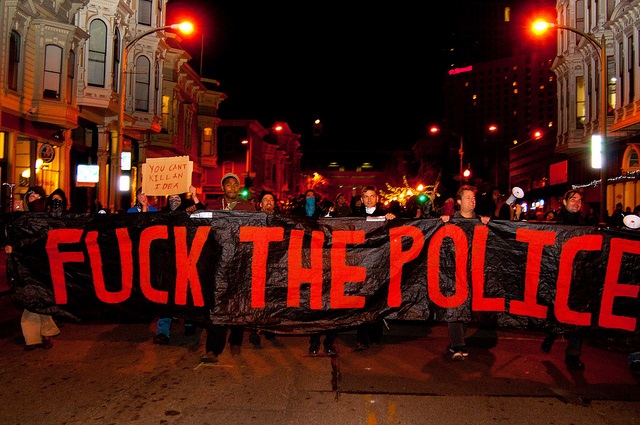Here are two profound moments of ’00s retro culture.
Listen:
Carlos Santana stares directly into the camera in front of a black background. “I love making people cry, laugh, and dance at the same time – giving and receiving a crucial orgasm,” he says. “I never wanted to be anything else since I was a child.”
His choice words are then brought to life.
Our man is shown standing before thousands of people at Eric Clapton’s 2004 Crossroads Guitar Festival in Dallas. It’s time for “Jingo,” Santana’s fourty-year-old call for crucial orgasms. He announces: “This is ‘Jingo’ and I want to feature our archangel of the century, Mr. Eric Clapton.” And out comes the Delta bluesman of the Thames. Santana’s band then struts forth in street march cadence. Blues riffs fall out of Clapton’s strings like dandruff while he scratches away at his guitar. Santana later bleats out the wailing, orgasmic note that wrote his name for four decades. And then it’s his mate’s turn. Clapton’s solo is taut and causes him to hold his guitar away from his body as if holding a boiling pot. Santana then waves down his arms to whisper into the mic to tell the crowd to listen to the Archangel.
Now let’s listen to another Santana concert video, but through video prankster St. Sanders’ ears. The “orgasms” are accurate. But something’s horribly wrong. Santana’s sound is gasping for air, every riff is barely finished and utterly out of tune. The drummer randomly hammers his snares once in awhile and the bassist only plays whenever he’s on camera Santana butchers his fretboard and plays as if picking at it like a scab. The band plays on and further goes out of wack – consider it “Guitar Center ambient.”
St. Sanders’ 2008 audio-dubbed treatment, titled, Santana Shreds is a YouTube hit and it inspired a few imitators, namely a shred video of Clapton versus Santana. One naïve viewer recently wrote, “Look, I know what I can hear and I hear two guitar players who are not just past their peak, but have basically, totally lost it.”
Could Comedy Break the ‘OOs Retro Curse?
Western pop culture is trapped in retro and we need something to break a few windows in order to breathe. The ’00s were a lost decade in Western pop culture. It’s forever trapped in history’s dustbin. Very little art and culture that distinguishes the ’00s will be remembered. Or at least that’s the black cloud that emerged from Retromania: Pop Culture’s Addiction to its Own Past, the latest book by esteemed critic and music journalist Simon Reynolds.
“Could it be that the greatest danger to the future of our music culture is…its past?,” he ominously writes.
Artifacts, bastardized customs, and nostalgic memories both real and false of decades past reigned over the ’00s. A creatively bankrupt Hollywood remade scores of old cash cows, an album reissue industry flourished, Hip™ fashion didn’t age past 1992, and numerous high-profile concerts were held where groups like Sonic Youth, Public Enemy, and Rush played their classic albums in their entirety.
Reynolds describes the ’00s as the “Re Decade.” He explains, “Instead of being about itself, the 2o00s have been about every other previous decade happening again all at once: a simultaneity of pop time that abolishes history while nibbling away at the present’s own sense of itself as an era with a distinct identity and feel.”
Unfortunately, Reynolds only briefly touches upon the fact that political or economic traumas could feed the hunger for retro. “In a destabilized world, ideas of durable tradition and folk memory start to appeal as a counterweight and a drag in the face of capitalism’s reckless and wrecking radicalism,” he writes.
But what can break the retro spectacle?
Perhaps it’s comedy.
A sardonic laugh could motivate people to recognize the absurdity and obsolesce of many past customs and ideals that retro culture loves.
The rise of our YouTube-obsessed visual culture has enabled anyone with cheap video editing software to tweak old video clips and magnify their absurdity. Scores of these works were uploaded to YouTube in the past few years. I interviewed St. Sanders as well as a producer of the Found Footage Festival for their views.
In the past few years, Santeri “St. Sanders” Ojala has produced several other “shred” videos that disgraced concert films by sacred cows and rock stars such as Led Zeppelin, Slash, and Blues Traveler. Guitar solos are butchered, drummers are never on time, bassists randomly slap their strings, and so many beloved lyrics are reduced to infantile gibberish.
Ojala told me he either pays homage to his favorite artists or mocks the “holy cow worshipping” as he put it.
“It’s not a big secret that inside the mainstream music business some stars are nothing more than puppets with absolutely nothing to say,” Ojala explained. “Meanwhile, talented artist(s) with a message get suppressed by huge, impersonal moneymaking machines.”
These are the machines whose public image matters over all content.
“With the videos, I’m saying that it doesn’t really matter what the content is, if only the surface is acceptable,” Ojala said.
However, despite his vandalism, the surface or the visual presence of the artists performing and their onstage rock star behavior still heavily figure over Ojala’s sound-jacking.
“Content can be mass-produced – I guess I’m trying to prove that with the videos I make. I strip the artist from the original content, replacing it with whatever I like and somehow it still ends up being the same. In my opinion, that proves content doesn’t matter if you want to be a star. I’ve yet to prove content does matter after all and I do have an idea on how to approach that.”
Alas, we have retro’s curse on art: superficiality still reigns over attempts to make content matter.
The Found Footage Festival (FFF) is dedicated to salvaging bizarre, unintentionally funny moments from what its producers consider to be a golden age of home video between 1985-95. Their results are shown to draw howls of laughter at theaters across the United States. For the past twenty years, the producers have gathered videotapes from garage sales, video store dollar bins, and even dumpsters. “VHS was so ubiquitous and so cheap that anyone with a few dollars and an idea could get something made,” festival co-curator Nick Prueher told me. “It also helps that consumer video was still relatively new, so people were experimenting with different formats and ideas, and a lot of them were really poorly thought out.”
Case in point is the FFF’s montage of seventeen sexual harassment awareness videos produced for company staffs in the early 1990s. The “Now, is this sexual harassment?” scenes range from bosses spontaneously kissing employees or abruptly giving bear hugs to godawful pickup lines such as “You handle cucumbers better than anyone I’ve seen.” Other FFF oddities include an instructional video for hypnotizing women into bed and rapped tutorials on cooking Wendy’s burgers and dealing with acne. There are so many absurd messages that were seriously delivered to impressionable minds.
Despite the producers’ live wisecracks they fire at the videos during FFF events, Prueher sees their work as a “celebration.”
He explained: “These are videos that we’ve personally found in most cases – we’ve watched them countless times and scrutinized every frame, so we have a genuine affection for the material. Our only statement is: This stuff is funny and worth preserving.”
Taking a darker and more twisted route into retro culture is the comedy blog, Everything is Terrible! (EIT) Video clips of fundamentalist Christian sermons, children’s shows, stand-up comedy bits, education videos, corporate training videos, and straight-to-video movies from the 1980s and 1990s are remixed into creepy or psychedelic moments. The EIT remixs include lowlight reels, abrupt jump cuts, distorted images, and voices slowed down to a demonic mumble. Their take on the glut of children’s videos that glutted Christian bookstores during the 1980s caught my eye, speaking as someone who grew up watching said videos in my born-again Christian aunt’s home.
Nightmarish flashbacks of the children’s entertainer Psalty the Singing Songbook arose after I watched the EIT remixes of his videos. A series of clever edits portray the gigantic blue songbook as an abductor of a dozen constantly complaining kids and prayers are digitally slowed down into sinister, undead praises. The most intriguing victims of EIT’s touch are the series of Internet home instruction videos produced on the eve of the Dot Com Boom. Internet functions are explained in a condescending manner to viewers whether it be suburban soccer moms or office temps. “An address bar? What is that? Some kind of singles joint?” a failed comedian tells the camera. He also tries to email a paper letter by slapping it against his monitor, and well you get the picture.
EIT essentially takes some of the worse aspects of 1980s and 1990s pop culture and tells us those are decades we can laugh at but we wouldn’t want to daydream about living then – contrary to retro culture’s temptations.
Perhaps these three examples of anti-retro comedy cannot entirely subvert retro’s grasp on pop culture. They still require at least a grain of respect for ghosts of kitsch’s past in order to make the laughs hurt harder for those who understand the punchline. Yet, a positive negation must be in order for 11s culture to lose the obsessive reverence and dependence upon the retro past for ideas. A little smugness doesn’t hurt; call it a sense that we are evolved and we know better than to resort back to obsolete ideals and escapist nostalgia. We’re already in the second decade of the 21st century, let’s make our time and place count.
Psalty photograph courtesy of Boutiquenarelle





